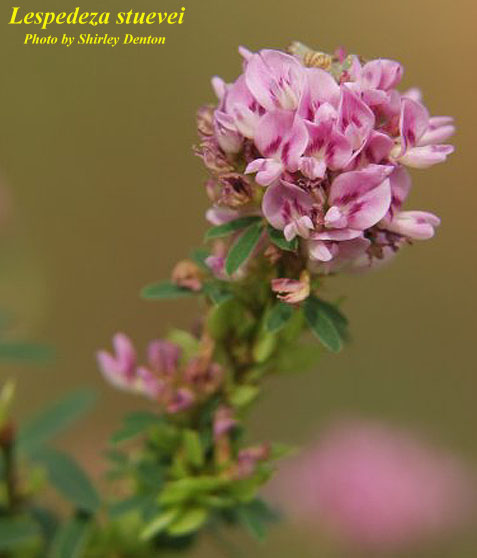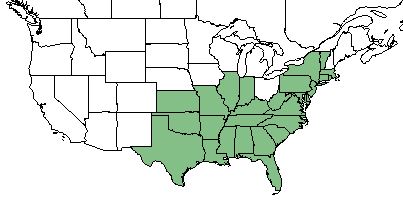Difference between revisions of "Lespedeza stuevei"
(→Conservation and Management) |
|||
| Line 42: | Line 42: | ||
==Conservation and Management== | ==Conservation and Management== | ||
| + | ''L. stuevei'' is listed as extirpated by the Indiana Department of Natural Resources Division of Nature Preserves and the Pennsylvania Department of Conservation and Natural Resources, as a special concern species by the Kentucky State Nature Preserves Commission, and as threatened by the New York Department of Environmental Conservation Division of Land and Forests. <ref name= "USDA Plant Database"/> | ||
==Cultivation and restoration== | ==Cultivation and restoration== | ||
Revision as of 20:27, 22 May 2018
| Lespedeza stuevei | |
|---|---|

| |
| Photo by the Atlas of Florida Plants Database | |
| Scientific classification | |
| Kingdom: | Plantae |
| Division: | Magnoliophyta - Flowering plants |
| Class: | Magnoliopsida - Dicots |
| Order: | Fabales |
| Family: | Fabaceae |
| Genus: | Lespedeza |
| Species: | L. stuevei |
| Binomial name | |
| Lespedeza stuevei Nutt. | |

| |
| Natural range of Lespedeza stuevei from USDA NRCS Plants Database. | |
Contents
Taxonomic Notes
Synonyms: none
Varieties: none
Description
L. stuevei is a perennial forb/herb of the Fabaceae family native to North America. [1]
Distribution
L. stuevei is found in the southeastern corner of the United States from Texas to Massachusetts. [1]
Ecology
Habitat
L. stuevei is found in woodlands and woodlands borders. [2]
Phenology
L. stuevei flowers August-October. [3]
Conservation and Management
L. stuevei is listed as extirpated by the Indiana Department of Natural Resources Division of Nature Preserves and the Pennsylvania Department of Conservation and Natural Resources, as a special concern species by the Kentucky State Nature Preserves Commission, and as threatened by the New York Department of Environmental Conservation Division of Land and Forests. [1]
Cultivation and restoration
Photo Gallery
References and notes
- ↑ 1.0 1.1 1.2 USDA Plant Database https://plants.usda.gov/core/profile?symbol=LEST5
- ↑ Weakley, A. S. (2015). Flora of the Southern and Mid-Atlantic States. Chapel Hill, NC, University of North Carolina Herbarium.
- ↑ PanFlora Author: Gil Nelson URL: http://www.gilnelson.com/PanFlora/ Date Accessed: 5/22/18